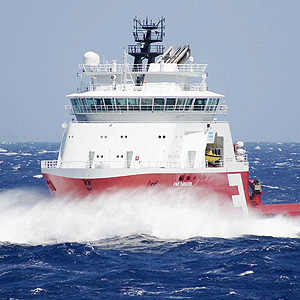Differences between Low, Medium, and High Speed Diesel Engines
Blog | July 18th, 2017

Incremental power deviations have existed on marine vessels for a long time. A call for Ahead-Half Speed or Full Speed Ahead fires the memory so that we recall an age where steam power ruled the waves. Today, however, incremental marine power refers to low, medium, and high-speed diesel engines. What differences separate these propulsion systems? The separation starts with RPM differences.
Diesel Engine Propulsion Differences
In terms of rotational velocity, low-speed diesel engines generate roughly 200 RPMs of turning energy. They’re typically two-stroke machines, so they’re coupled directly to the propulsion system. Medium-speed models ramp up the velocity, so expect a speed rating that comfortably touches the 800 RPM mark, with help from a drive-interfacing gear train and a trunk piston engine architecture that uses a four-stroke diesel combustion cycle. Finally, still in terms of engine rotations per minute, high-power diesel engines are entirely capable of powering a drive shaft at or above 1200 RPMs, again with the aid of a heavily muscled engine block. Of course, higher rotations per minute values are important, but that raw rotational speed won’t turn a large ship’s propeller, not until it’s coupled to an advanced speed reduction gear train.
Functional Marine Applications
Starting with low-speed diesel prime movers and their marine application, this is a large-scale two-stroke engine that’s commonly found on larger ships. Fifteen-metre high power plants fill their engine rooms, deliver over 100,000 hp, and weigh in excess of 1,500 metric tonnes. A low-speed engine shaft connects directly to the propulsion system, with the turbocharged two-stroke cylinder housing then providing bountiful quantities of drive torque. Built big, this engine requires a special starter system, one that probably uses compressed air. Meanwhile, the medium-speed prime mover operates the ship’s generators. On a smaller seagoing craft, that medium-sized model is coupled to a small bore shaft and used as a propulsion engine, although it’ll likely require the services of a speed reduction unit to accomplish this duty.
Finally, we’re not forgetting the high-speed diesel engine, a piece of equipment that uses its efficient four-stroke design to propel yachts and smaller vessels. Made to burn refined fuels, the high-speed model requires a lubricant for its system parts and the associated coupling system. As for the medium and low-speed models, these larger machines are designed to burn cheaper fuels, but, in doing so, the diesel fuel must be kept warm and viscous. In short, those latter two large-scale engines require more maintenance than their smaller, high-speed cousin.
Optimized by NetwizardSEO.com.au
Recent Posts
- Marine Anchor and Chain: Innovations in Anchor Technology for Modern Vessels
- Marine Supplies and Dry Docking: How Japan Marine Spares Improve Efficiency
- Marine Deck Cranes & Machinery Supply from Japan Marine Engineering: Navigating the Global Market in 2024
- Marine Diesel Turbochargers: New Equipment and Spares from Japan Marine Engineering
- KEMEL Stern Tube Seals: Amplifying Engine Propulsion and Propeller Shaft Longevity
- Mitsubishi Selfjectors: The Cutting-Edge Oil Purifiers for Marine Vessels
- Marine Vessel Spare Parts: Australian Global Supplier for Shipping Industries
- Yanmar Fuel Injection Valves: The Power of Precision in Marine Engine Performance
- Why Yanmar Fuel Injection Pumps are the Reliable Choice for Your Engines
- Yanmar Diesel Engine Maintenance: Advantages of Using Genuine Yanmar Parts and Fluids
